实际上,
MySQL根本就不识别outer关键字,
hive才支持。
——数据准备:
表1_ jn1 _ name,id
tom,1jey,2lilly,7lilly,8
表2_ jn2 _ name,id
tom,1lilly,3may,4bob,5
1
join
INNER JOIN的简写。
会把两个表共有的部分筛选出来,一般用于A表和B表都存在的记录进行关联。
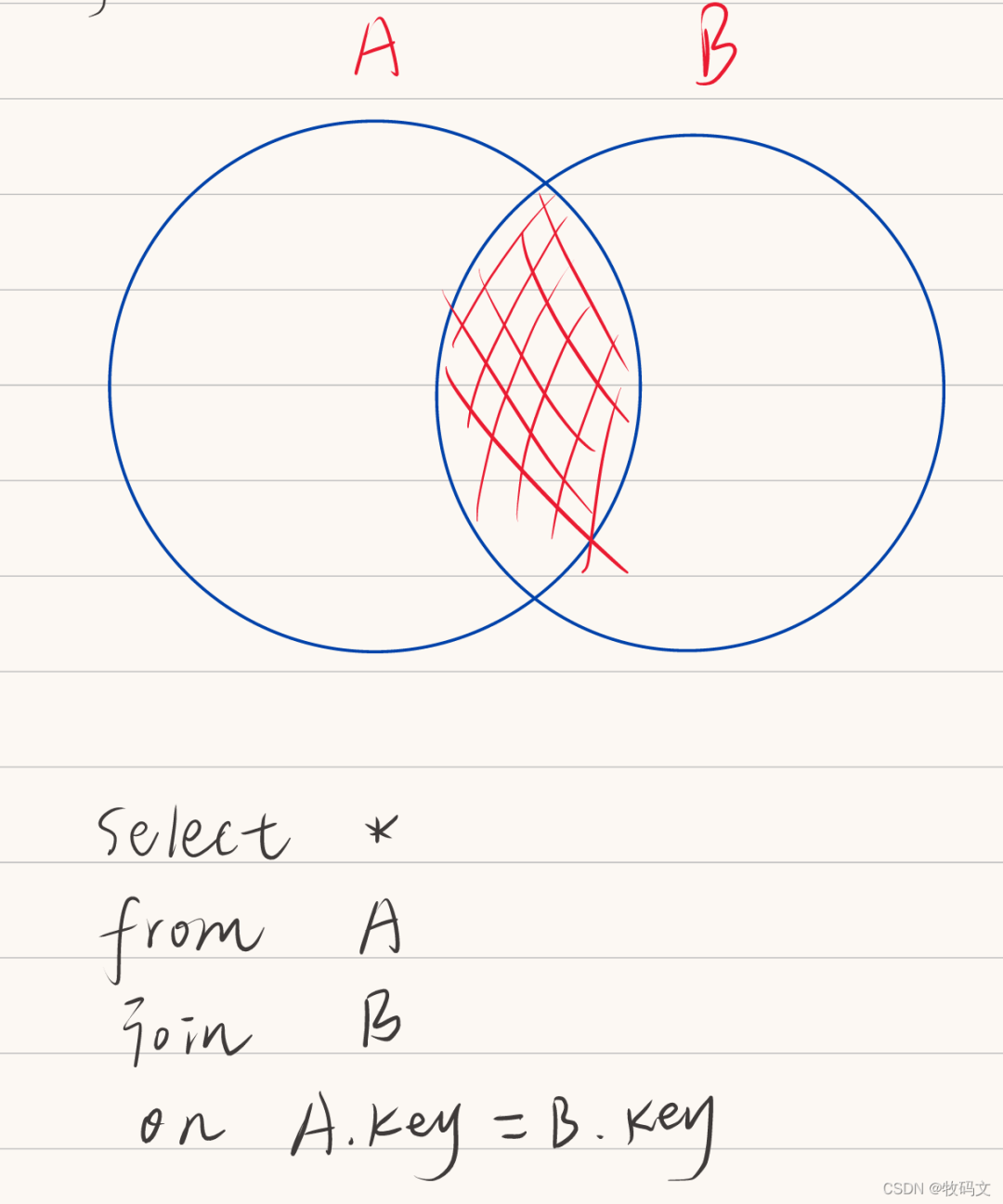
select *from jn1join jn2on jn1.name=jn2.name;
结果:
jn1.name jn1.id jn2.name jn2.idtom 1 tom 1lilly 7 lilly 3lilly 8 lilly 3
如果不写连接条件on,MySQL和hive均会产生笛卡尔乘积。但hive会排序,而MySQL不会。
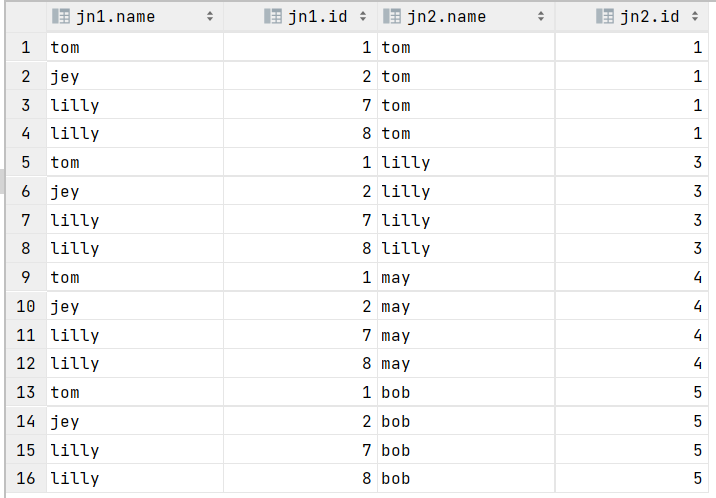
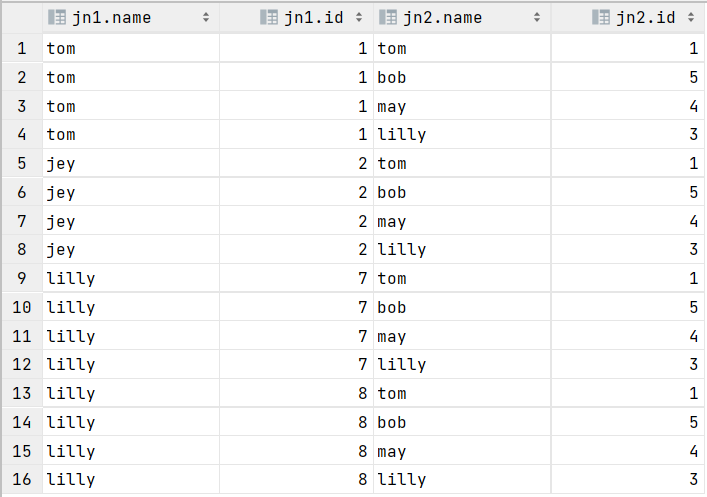
2
left join
hive中 LEFT OUTER JOIN的简写。
会把左边的表所有数据列出来,当左边表有而右边表没有的时候,就会用null代替.
一般用于A表有而B表没有的记录进行关联,然后用where过滤掉B表中有null的记录行
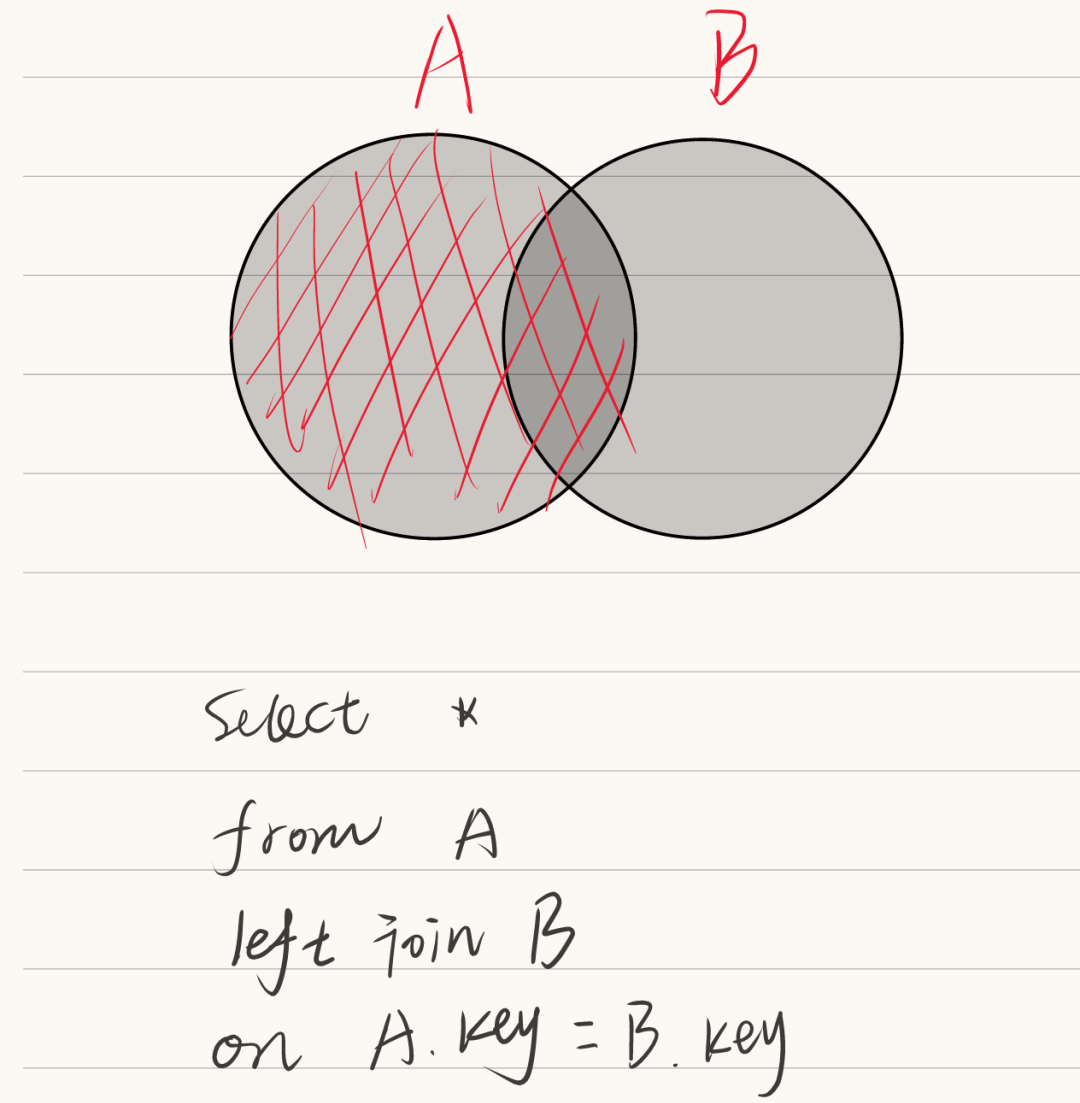
select *from jn1left join jn2on jn1.name=jn2.name;
结果:
jn1.name jn1.id jn2.name jn2.idtom 1 tom 1jey 2 NULL NULLlilly 7 lilly 3lilly 8 lilly 3
3
full join
会把两者没有的、有的全部数据都选出来,没有的显示空值null
MySQL不支持full join...on;此时的full join等同于join(笛卡尔乘积)
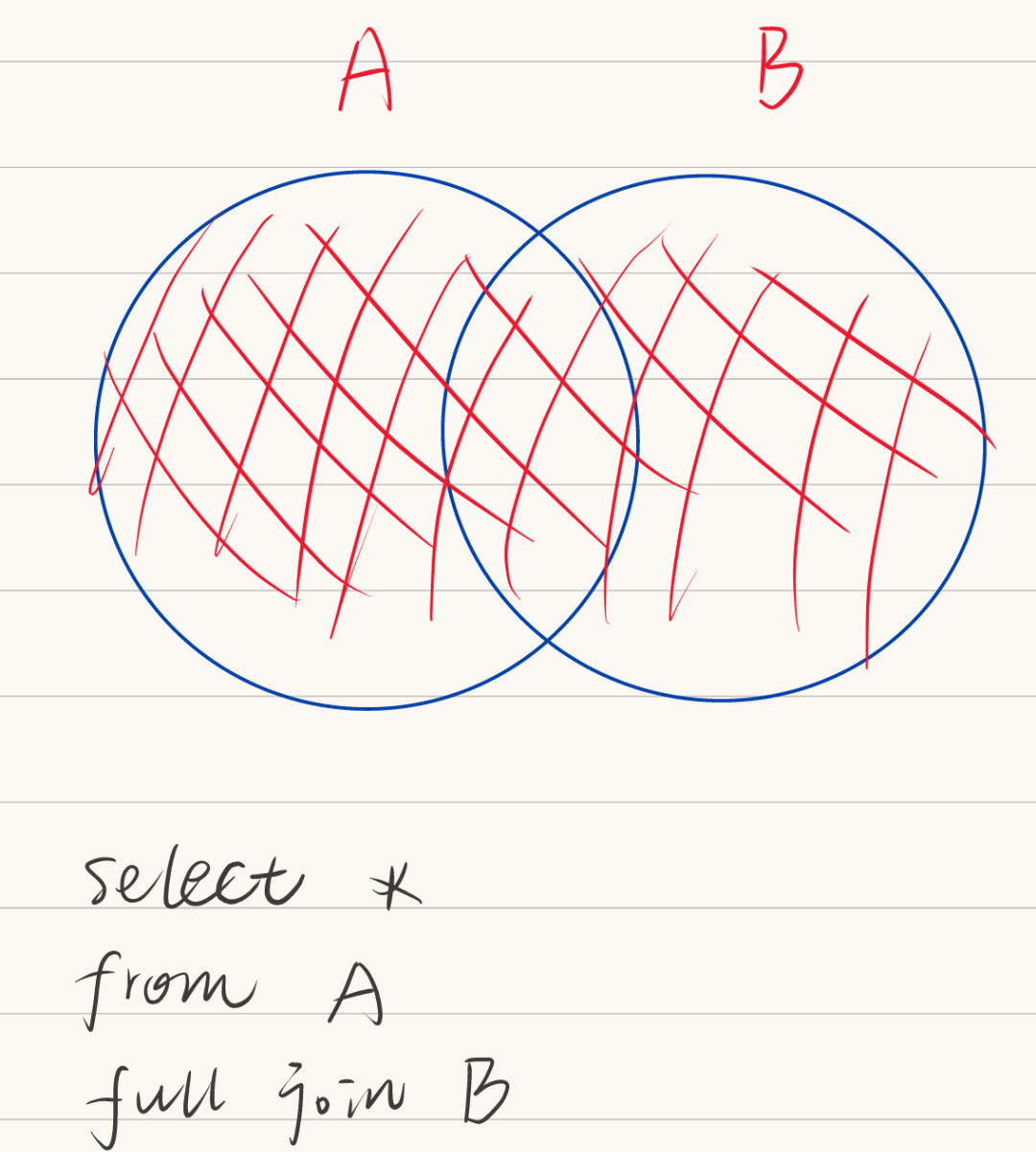
select *from jn1full join jn2on jn1.name = jn2.name;
结果:
jn1.name jn1.id jn2.name jn2.idtom 1 tom 1NULL NULL bob 5jey 2 NULL NULLlilly 7 lilly 3lilly 8 lilly 3NULL NULL may 4
4
union
会把查询结果拼接起来,但是要求两个查询结果的列数、列名(支持别名,具体没试过)必须保持一致。
否则会报错:
FAILED: SemanticException Schema of both sides of union should match
hive:
去重且排序:作用等价于 先distinct去重、再UNION ALL表合并、再order by排序。
(查询出的结果集不知道按什么规则排序,待研究)
select *from jn1unionselect *from jn2;
hive结果:
name idjey 2lilly 7bob 5lilly 3lilly 8tom 1may 4
MySQL:去重、拼接。
MySQL结果:
name idtom 1jey 2lilly 7lilly 8lilly 3may 4bob 5
5
union all
hive同MySQL一致:
基本同union,但不去重、不排序,原表直接合并
select *from jn1union allselect *from jn2;
结果:
name idtom 1jey 2lilly 7lilly 8tom 1lilly 3may 4bob 5
——总结:
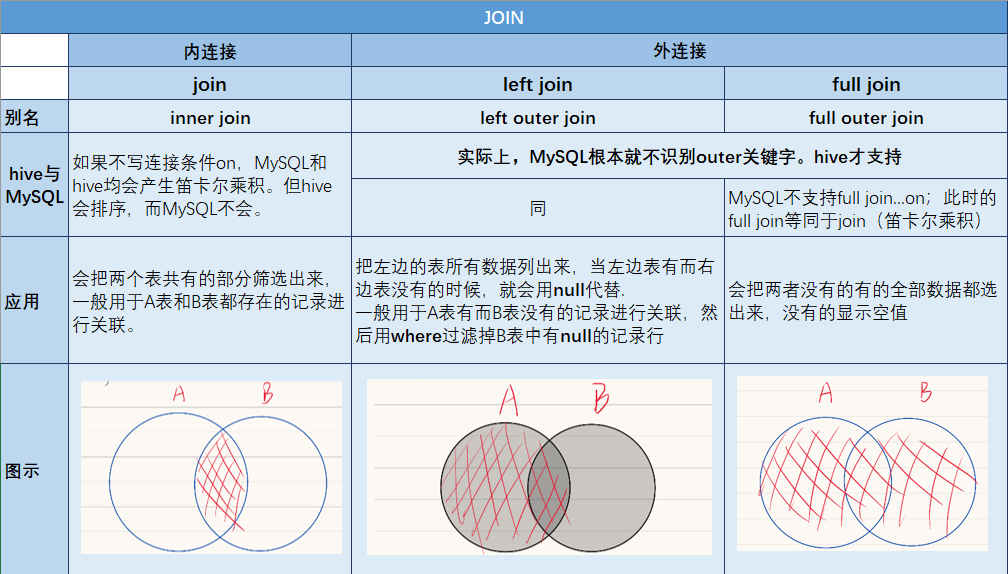
1
J O I N
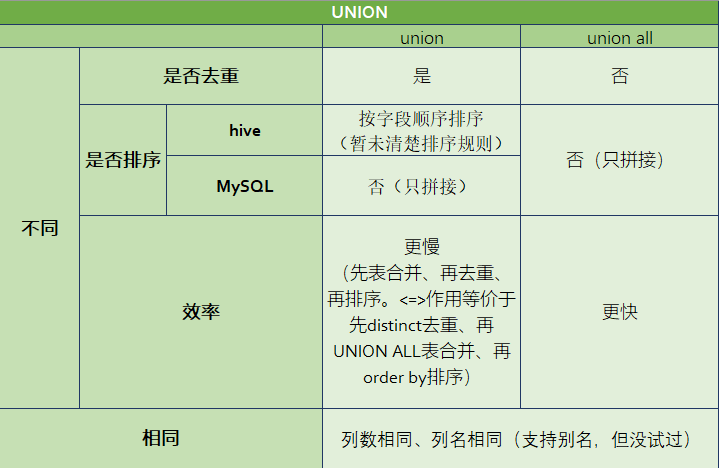
2
U N I O N
部分素材来自于网络
http://t.zoukankan.com/Formulate0303-p-15796992.html
https://blog.csdn.net/weixin_46429290/article/details/123358552






